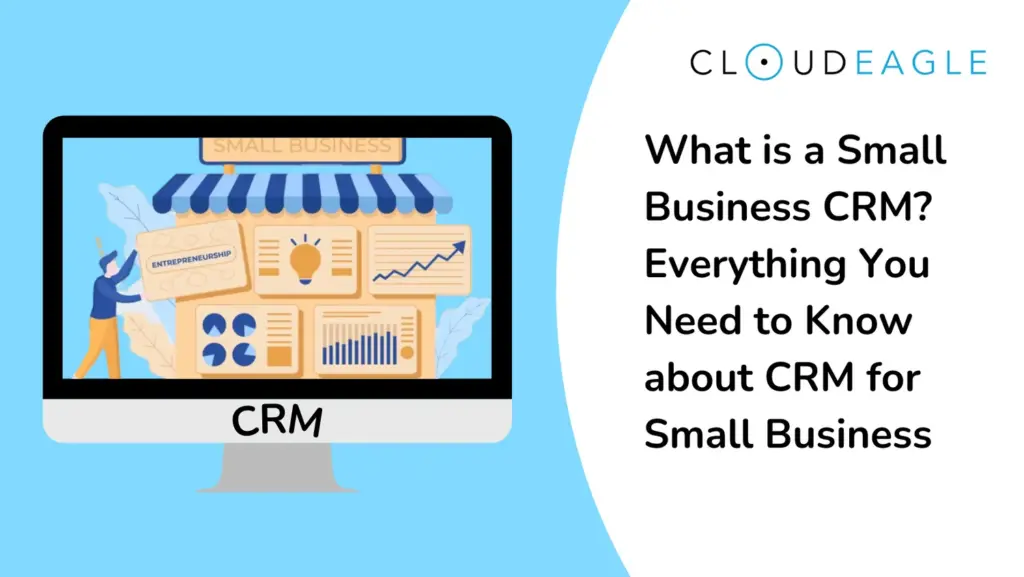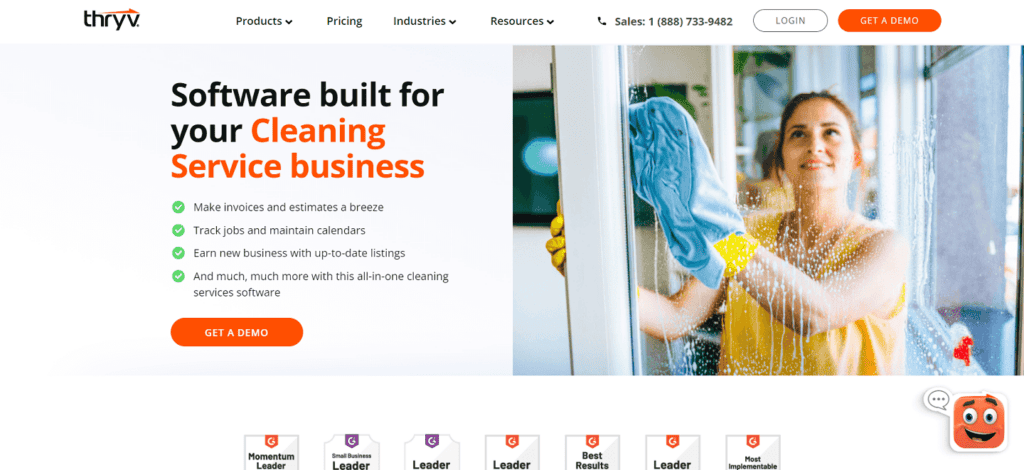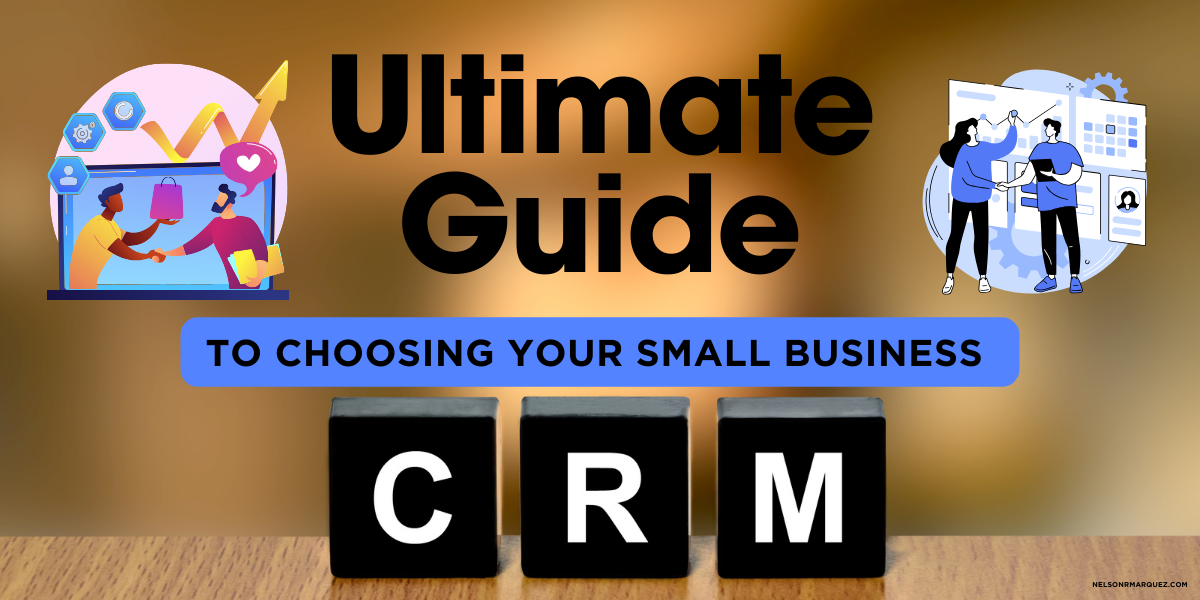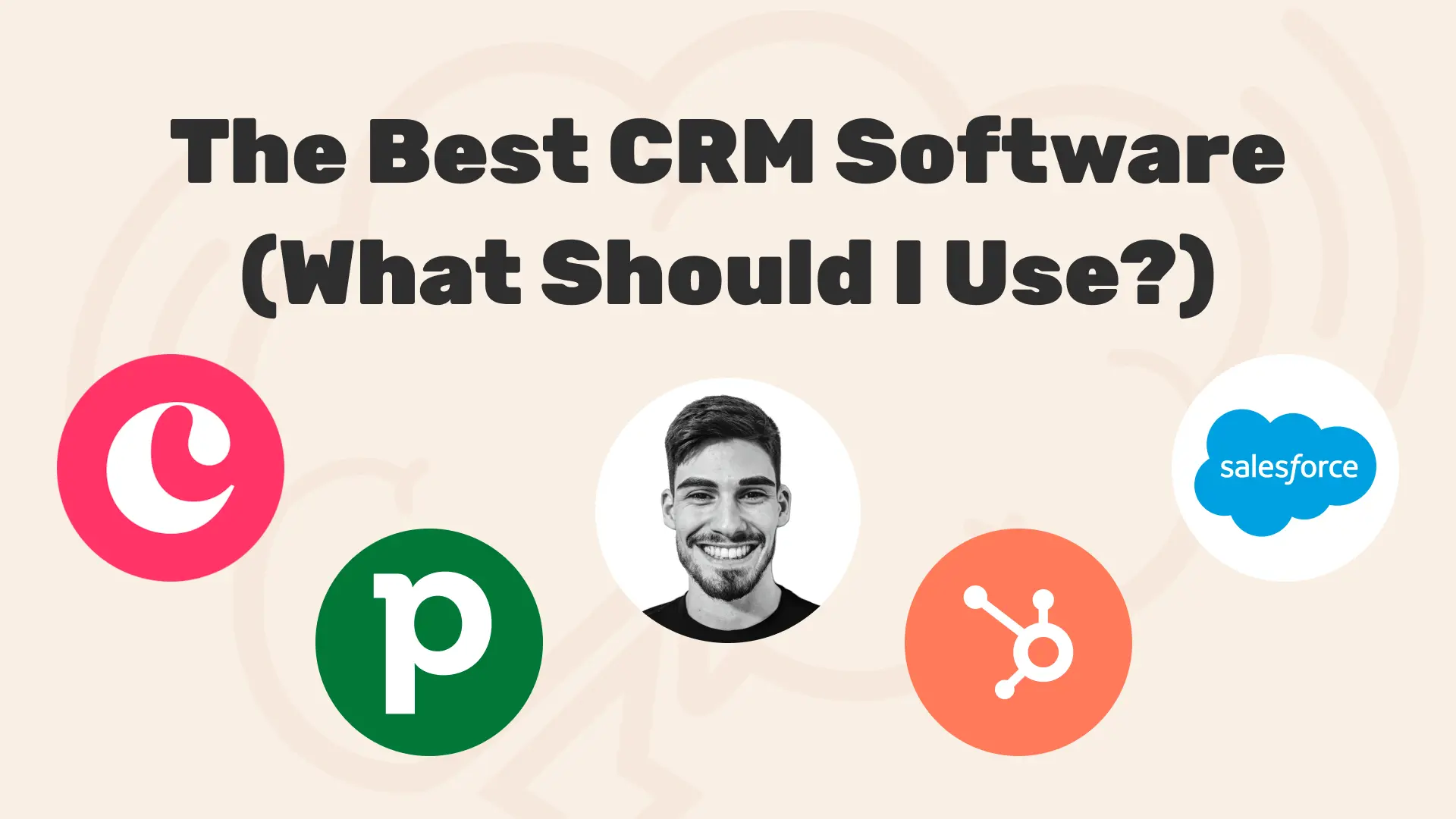
Small Business CRM Setup: Your Complete Guide to Customer Relationship Management
Starting a small business is a rollercoaster. There are so many moving parts, from product development and marketing to sales and customer service. And in the midst of all this, you’re constantly juggling emails, phone calls, and spreadsheets, trying to keep track of your leads, clients, and the overall health of your business. That’s where a CRM, or Customer Relationship Management system, comes in. It’s like having a super-organized assistant who helps you manage all those interactions and data points in one central location.
This guide is your comprehensive roadmap to setting up a CRM for your small business. We’ll walk you through every step, from understanding the benefits of a CRM to choosing the right platform and implementing it successfully. No jargon, just practical advice to help you get started and thrive.
Why Your Small Business Needs a CRM
Before we dive into the setup, let’s talk about why a CRM is a game-changer for small businesses. It’s not just a fancy tool for big corporations; it’s an essential asset for businesses of all sizes. Here’s why:
- Improved Customer Relationships: A CRM gives you a 360-degree view of your customers. You can track their interactions, preferences, and purchase history, allowing you to personalize your communication and build stronger relationships.
- Enhanced Sales Efficiency: Say goodbye to scattered leads and missed opportunities. A CRM streamlines your sales process, helping you identify and nurture leads, track deals, and close more sales.
- Increased Productivity: Automate repetitive tasks like data entry and follow-up emails, freeing up your time to focus on more strategic activities.
- Better Data Analysis: Gain valuable insights into your sales performance, customer behavior, and marketing effectiveness. This data-driven approach helps you make informed decisions and optimize your strategies.
- Centralized Data: No more searching through endless spreadsheets and email threads. A CRM centralizes all your customer information in one secure location, making it easy to access and share information across your team.
- Scalability: As your business grows, your CRM can grow with you. Choose a platform that can handle increasing data volume and evolving business needs.
In essence, a CRM helps you work smarter, not harder. It empowers you to provide exceptional customer experiences, boost sales, and drive sustainable growth.
Choosing the Right CRM for Your Small Business
Selecting the perfect CRM is crucial. It’s like choosing the right tool for the job; the wrong one can hinder your progress. Here are the key factors to consider:
1. Business Needs and Goals
Before you start browsing CRM options, take a step back and define your specific needs and goals. Ask yourself:
- What are your primary business objectives? (e.g., increase sales, improve customer retention, streamline marketing efforts)
- What are your pain points? (e.g., struggling to manage leads, difficulty tracking customer interactions, lack of sales visibility)
- What features are essential? (e.g., contact management, sales pipeline, email marketing integration, reporting)
- How many users will need access to the CRM?
- What is your budget?
Answering these questions will help you narrow down your options and focus on CRM platforms that align with your requirements.
2. Key Features to Look For
Different CRM systems offer different features. Here are some of the most important features to consider:
- Contact Management: The core function of any CRM. It should allow you to store and organize contact information, including names, addresses, phone numbers, email addresses, and any other relevant details.
- Lead Management: Features to capture, track, and nurture leads throughout the sales cycle. This includes lead scoring, lead assignment, and automated follow-up sequences.
- Sales Pipeline Management: A visual representation of your sales process, allowing you to track deals, manage stages, and identify bottlenecks.
- Email Marketing Integration: Seamless integration with email marketing platforms to send targeted campaigns, track open rates, and measure campaign performance.
- Reporting and Analytics: Robust reporting features to track key metrics, analyze sales performance, and gain insights into customer behavior.
- Automation: Automation features to streamline repetitive tasks, such as sending follow-up emails, creating tasks, and updating contact records.
- Integration with Other Tools: Compatibility with other tools you use, such as email providers (Gmail, Outlook), accounting software (QuickBooks, Xero), and marketing automation platforms (Mailchimp, HubSpot).
- Mobile Accessibility: A mobile app or responsive design to access your CRM data on the go.
- Customer Support: Reliable customer support to assist you with any technical issues or questions.
3. Popular CRM Platforms for Small Businesses
The market is brimming with CRM solutions, each with its own strengths and weaknesses. Here are some of the most popular options for small businesses:
- HubSpot CRM: A free, user-friendly CRM with a comprehensive suite of features, including contact management, sales pipeline, and email marketing integration. HubSpot is known for its ease of use and robust free plan.
- Zoho CRM: A versatile and affordable CRM with a wide range of features, including sales automation, marketing automation, and customer service tools. Zoho CRM offers a variety of pricing plans to suit different business needs.
- Salesforce Sales Cloud: A powerful and customizable CRM that’s ideal for businesses with complex sales processes. Salesforce offers a vast array of features and integrations, but it can be more expensive and complex to set up.
- Pipedrive: A sales-focused CRM with a visual pipeline and intuitive interface. Pipedrive is designed to help sales teams manage leads, track deals, and close more sales.
- Freshsales: A user-friendly CRM with a focus on sales automation and lead management. Freshsales offers features like built-in phone and email integration.
- Agile CRM: An all-in-one CRM that combines sales, marketing, and customer service features. Agile CRM is known for its affordability and ease of use.
When selecting a CRM, try out a few different platforms with free trials to see which one best fits your needs and preferences.
4. Budget and Pricing
CRM pricing varies widely, from free plans to enterprise-level subscriptions. Consider your budget and the features you need when evaluating pricing options. Here are some common pricing models:
- Free Plans: Many CRM platforms offer free plans with limited features and user accounts. These are a great starting point for small businesses with basic needs.
- Subscription-Based Pricing: Most CRM platforms offer subscription-based pricing, with monthly or annual fees based on the number of users and the features included.
- Tiered Pricing: Some platforms offer tiered pricing plans, with different features and pricing levels based on your business’s needs.
- Custom Pricing: For larger businesses with complex requirements, some CRM vendors offer custom pricing plans.
Be sure to compare pricing across different platforms and consider the long-term cost of ownership, including implementation, training, and ongoing maintenance.
Setting Up Your Small Business CRM: A Step-by-Step Guide
Now that you’ve chosen your CRM, let’s get down to the nitty-gritty of setting it up. Here’s a step-by-step guide to help you get started:
Step 1: Planning and Preparation
Before you dive into the technical setup, take some time to plan your implementation. This will save you time and headaches down the road.
- Define Your Goals: Clearly articulate your goals for the CRM. What do you want to achieve? (e.g., improve sales efficiency, enhance customer satisfaction, gain better insights)
- Identify Your Data Sources: Determine where your customer data currently resides (e.g., spreadsheets, email contacts, existing databases).
- Clean and Organize Your Data: Before importing your data, clean and organize it. Remove duplicates, correct errors, and standardize formatting.
- Assign Roles and Responsibilities: Determine who will be responsible for managing the CRM, entering data, and using the system.
- Create a Timeline: Set a realistic timeline for implementing the CRM, including data migration, training, and testing.
Step 2: Setting Up Your Account and Initial Configuration
Once you’ve planned, it’s time to create your account and configure the initial settings.
- Create an Account: Sign up for your chosen CRM platform and create an account.
- Customize Your Profile: Set up your profile, including your company information, logo, and branding.
- Configure User Access and Permissions: Add users and assign roles and permissions based on their responsibilities.
- Set Up Your Currency and Time Zone: Configure the currency and time zone settings for your business.
- Integrate with Other Tools: Connect your CRM with other tools you use, such as email providers, accounting software, and marketing automation platforms.
Step 3: Importing and Organizing Your Data
Now it’s time to import your existing data into the CRM. Most CRM platforms allow you to import data from spreadsheets, CSV files, and other sources.
- Prepare Your Data for Import: Ensure your data is in a compatible format (e.g., CSV).
- Import Your Contacts: Import your contacts, including names, addresses, phone numbers, and email addresses.
- Import Your Leads and Deals: If you have existing leads and deals, import them into the CRM.
- Map Your Fields: Map your data fields to the corresponding fields in the CRM.
- Test Your Import: After importing your data, review it to ensure it has been imported correctly.
- Organize Your Data: Use tags, categories, and custom fields to organize your data and make it easier to find and manage.
Step 4: Customizing Your CRM
Tailor your CRM to fit your business needs by customizing various features.
- Create Custom Fields: Add custom fields to store information that is specific to your business, such as industry, product preferences, or customer lifetime value.
- Customize Your Sales Pipeline: Customize your sales pipeline to reflect your sales process, including deal stages and sales activities.
- Set Up Automation Rules: Automate tasks like sending follow-up emails, creating tasks, and updating contact records.
- Customize Your Reports and Dashboards: Create custom reports and dashboards to track key metrics and gain insights into your business performance.
- Integrate with Your Website: Integrate your CRM with your website to capture leads and track website activity.
Step 5: Training Your Team
Training is essential to ensure that your team can effectively use the CRM. Invest time in training your team to maximize the system’s benefits.
- Develop a Training Plan: Create a training plan that covers all the essential features of the CRM.
- Provide Hands-On Training: Provide hands-on training to your team, allowing them to practice using the CRM.
- Create Training Materials: Develop training materials, such as user manuals, video tutorials, and FAQs.
- Offer Ongoing Support: Provide ongoing support to your team, answering their questions and addressing any issues they may encounter.
- Monitor User Adoption: Track user adoption and identify any areas where additional training or support is needed.
Step 6: Testing and Launching
Before going live, thoroughly test your CRM to ensure it is working correctly.
- Test All Features: Test all the features of the CRM, including contact management, lead management, sales pipeline, and reporting.
- Test Integrations: Test your integrations with other tools to ensure they are working properly.
- Get Feedback from Users: Get feedback from your team on the CRM and make any necessary adjustments.
- Launch Your CRM: Once you are satisfied with the testing, launch your CRM and start using it to manage your customer relationships.
- Monitor Performance: Monitor the performance of your CRM and make any necessary adjustments to optimize its effectiveness.
Best Practices for CRM Implementation
Setting up a CRM is just the beginning. Here are some best practices to ensure its long-term success:
- Data Accuracy: Regularly review and update your data to ensure its accuracy. Inaccurate data can lead to poor decision-making and wasted resources.
- Data Security: Implement strong security measures to protect your customer data.
- User Adoption: Encourage user adoption by providing training and ongoing support.
- Regular Updates: Stay up-to-date with the latest CRM features and updates.
- Regular Review and Optimization: Regularly review your CRM usage and make adjustments as needed to optimize its effectiveness.
- Integration is Key: Prioritize integrations with tools your team already uses to create a seamless workflow.
- Automate Wherever Possible: Leverage automation features to save time and reduce errors.
- Focus on the Customer: Always keep the customer at the center of your CRM strategy.
Troubleshooting Common CRM Setup Issues
No matter how well you plan, you might encounter some hiccups during your CRM setup. Here’s how to address some common issues:
- Data Import Errors: If you have trouble importing your data, double-check the file format and field mapping. Also, make sure your data is clean and free of errors.
- Integration Problems: If you encounter problems with integrations, make sure the integrations are properly configured and that your accounts are connected correctly.
- User Adoption Challenges: If your team is reluctant to use the CRM, provide additional training and support. Highlight the benefits of using the CRM and demonstrate how it can simplify their work.
- Customization Issues: If you have trouble customizing your CRM, consult the platform’s documentation or contact their customer support.
- Performance Issues: If your CRM is running slow, optimize your data, reduce the number of customizations, and ensure that your internet connection is stable.
The Future of CRM for Small Businesses
The CRM landscape is constantly evolving, with new technologies and features emerging all the time. Here are some trends to watch:
- Artificial Intelligence (AI): AI-powered CRM features are becoming increasingly common, offering features like predictive analytics, chatbots, and automated recommendations.
- Personalization: Customers expect personalized experiences, and CRM platforms are evolving to enable businesses to deliver them.
- Mobile CRM: Mobile CRM is becoming more important, allowing businesses to access their data and manage their customer relationships on the go.
- Integration with Emerging Technologies: CRM platforms are integrating with emerging technologies like IoT and blockchain.
By staying informed about the latest trends, you can ensure that your CRM remains a valuable asset for your business.
Conclusion: Embrace the Power of CRM
Setting up a CRM for your small business is a significant step towards building stronger customer relationships, boosting sales, and driving sustainable growth. By following this guide and embracing the best practices outlined, you can successfully implement a CRM and unlock its full potential. Remember to choose the right platform, plan carefully, train your team, and continuously optimize your CRM to ensure its long-term success. The effort you put into setting up and managing your CRM will pay dividends in terms of customer loyalty, sales, and business efficiency. So, take the plunge, embrace the power of CRM, and watch your small business thrive!


